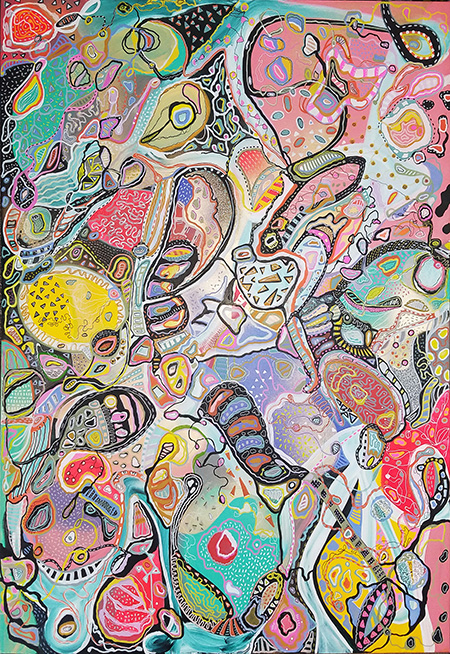
Continuing through May 13, 2017
Ann Johnson’s newest work is very political, addressing issues such as immigration, gender issues and, of course, race. As a self-described strong black woman living in Texas, she has been intensely affected by recent events such as the death of Sandra Bland while in the custody of Waller County, Texas, police. Bland died in jail after being pulled over for a minor traffic violation. In sculptures combining found objects, Johnson invokes titles such as “You Can’t See” (also the title of the show), “How You See Me,” and “What I Can See,” all of which draw attention to cultural stereotypes and assumptions.
In “What I Can See,” for example, she inserted aviator sunglasses into glass blocks, evoking law enforcement officers who often wear this style of shades. In a similar piece, she printed the words “you blind to the facts” and “you can’t see what I can see” on the clear lenses of a pair of glasses, one of several also placed inside glass blocks and stacked on top of one another. The top block in the stack holds one of Johnson’s signature objects, a faint photograph of a young black man printed on a fragile dried leaf. Although she is a confident woman, Johnson is acutely aware of how others may see her through the lens of race.
Johnson’s work is also on view at Art League Houston as part of a show she curated, "How Do I Say Her Name," featuring artwork by nine women of color. Both shows focus attention on #SayHerName, a social movement that seeks to raise awareness for black female victims of police brutality and anti-black violence in the U.S. This cause is the counterpart to #BlackLivesMatter, which is a response to the deaths of black males. Johnson also has pieces in the gallery show about immigration and gentrification. “Immigration” is a box construction of illuminated relief-stamp letters that spell out #YUS (“why us?”), while “Gentrification’s Song” is another set of stacked glass blocks containing eyeglasses with the words “gentrification matters” printed on them.
Alongside Johnson’s sculptures are paintings on paper by Desira Garcia, a young artist who recently received her BFA from the University of Houston. In "Unnatural Order," she takes on the lack of authentic human connection when using social media programs like Facebook and Twitter in abstract, intensely detailed work. The patterns in her paintings look like something one might see when looking at human cells through a microscope or galaxies and stars through a telescope.
In “Instant Connection,” two heavily patterned cell-like forms are connected only by a single conduit that resembles a blood vessel. In “Social Path,” a series of intertwined pathways, dot-filled lines, and irregular ovals serve as a metaphor for a confusing network of social-media connections. Garcia objects to such relationships, which are measured by the number of “shares” and “likes” one receives in response. She questions the long-term effect of interacting primarily through digital language, asking “How will this alter us in the future? Will this eventually interrupt the natural order of things?”
Both Johnson and Garcia use their art to focus attention on issues pertaining to the way people interact in today’s complex, constantly changing society. Their pieces complement one another by raising timely but distinctive concerns while examining and questioning the status quo.
